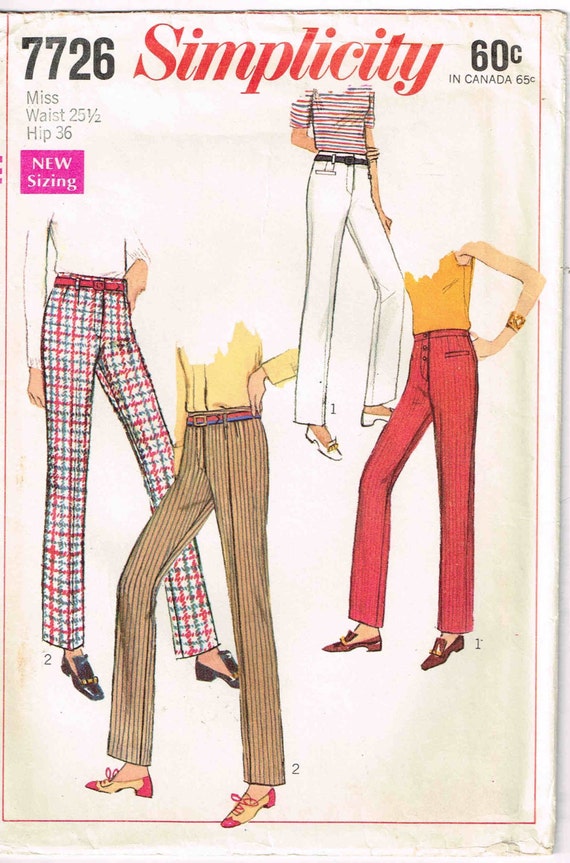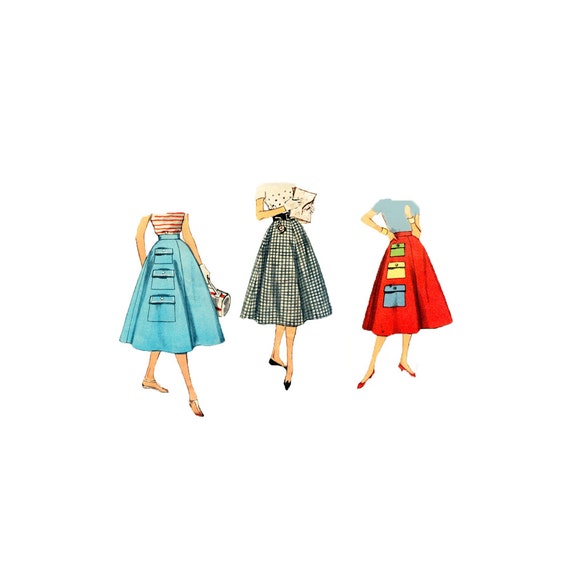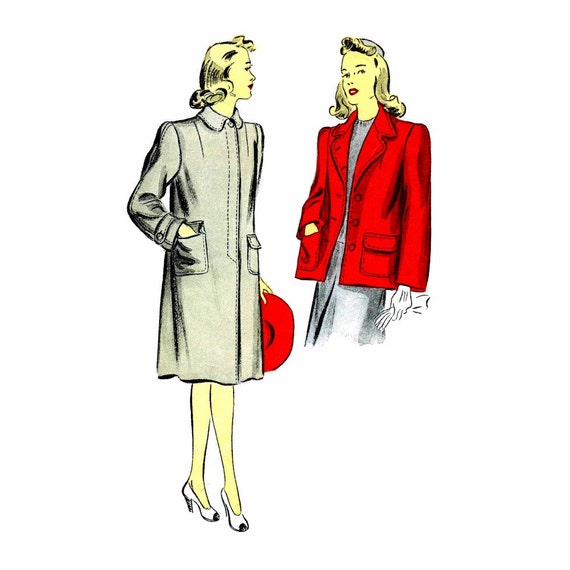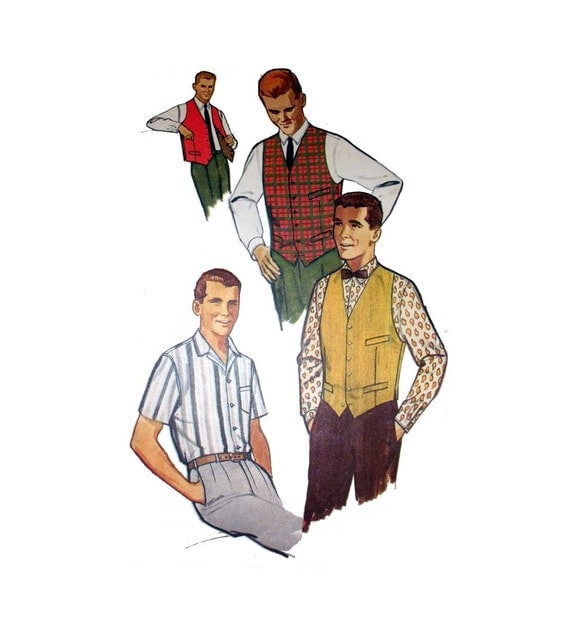Here are 3 types of pockets for you to either add to an existing garment or construct as you are making a new one. I for one love pockets.
Courtesy of Mary Beth

PATCH POCKET
First is the basic patch pocket. The most important thing to remember when creating a patch pocket is to make sure that all sides are even and true. As long as the measurements are accurate, the rest is easy!
 |
| McCall 7775 VirtualVintage |
 |
| Simplicity 3289 SoVintageonetsy |
If the garment you are making doesn't have a pocket, you need to create a pattern for it. Use a piece of cardboard such as a cereal box. Measure your dimensions carefully and cut it out. Cut the cardboard keeping in mind that you need to have enough allowance to turn under. When creating rounded corners, cut several notches to allow fabric to lay flat when turned under. Press before attaching to garment. See figures 1-4 for details.
FLAP POCKET
 You can easily add a flap to a patch pocket. Add the desired hem at the top of the pocket. Turn hem to the right side and stitch. (Fig. 5) Turn, baste, and press edges so that they are even. Hem by hand or by machine before stitching pocket to garment. Make sure that the placement of stitching on pocket and flap line up. (Fig. 6)
You can easily add a flap to a patch pocket. Add the desired hem at the top of the pocket. Turn hem to the right side and stitch. (Fig. 5) Turn, baste, and press edges so that they are even. Hem by hand or by machine before stitching pocket to garment. Make sure that the placement of stitching on pocket and flap line up. (Fig. 6) BOUND POCKETS
 When making bound pockets, the weight of the fabric matters. If the fabric is lightweight, the fabric can be used for both the binding and the lining. If heavyweight, use self fabric for binding and a lining fabric for the pocket.
When making bound pockets, the weight of the fabric matters. If the fabric is lightweight, the fabric can be used for both the binding and the lining. If heavyweight, use self fabric for binding and a lining fabric for the pocket.
First mark the pocket opening on both the binding and the garment. Cut the binding at least 1 inch longer than the completed pocket and 3 to 4 inches wide. (Fig. 7). Be sure to match the grain of material of binding and garment or if the pocket is at an angle, the binding should be on the bias.
Place binding on right side of material, matching where the cutting lines will fall. Pin and baste carefully. Stitch around the cutting line - the distance you stitch back from the cutting line depends on the effect desired when finished. One-Forth inch back from the cutting line gives an attractive piped effect. In heavier materials you need to stitch at least one-half inch from the cutting line. Make square corners at the ends by leaving the machine needle down in fabric, lift the presser foot and turn fabric making the same number of stitches across both ends (Fig. 7)
Cut through center of cutting line to within one-quarter inch from each end. Now slash from center to each corner being careful to not snip the stitches. Pull the binding piece through to wrong side. Continue to pull until it forms two even rows with perfect square on other side. Stitch across each end to hold the binding together. (Fig.8) Then stitch around buttonhole in the seam edge so it will be flat.
 |
| Simplicity 7726 PeoplePackages |
Which ever style you chose, take your time to make sure that your pocket placement is accurate. It can make or break a garment!




I love pockets in my garments....it gives me something to do with my hands!
ReplyDeleteI love pockets too. My mother wouldn't sew pockets into my clothes because "a lady doesn't shove her hands in her pockets, she wears gloves.... " Apparently, she didn't know me very well.
DeleteGreat instructions! (And I agree with Jantiki :-)
ReplyDeleteLove pockets and wish some of my favorite clothing items had them, wonderful article!
ReplyDeleteIf my casual slacks DON'T have pockets, they're useless as far as I'm concerned. I like to shop with only a small change purse, that hold's a driver's license, a small amount of money and a credit card. So I always need a handy pocket when shopping. Ditto for a summer skirts.. My coats always have pockets. Dress-up clothes ----I can manage without. But for most of my life style.....I WANT POCKETS !!!!
ReplyDeleteI'm lost without pockets! Thanks for another informative post. :)
ReplyDeleteI honestly never thought about pocket types. Thanks for the post!
ReplyDeleteGive me a pocket and I am in heaven! I love them on skirts, pants, and dresses!
ReplyDeletePocket styles make such a difference in the look of the garment, don't they?
ReplyDeleteGreat blog I enjoyed readding
ReplyDelete